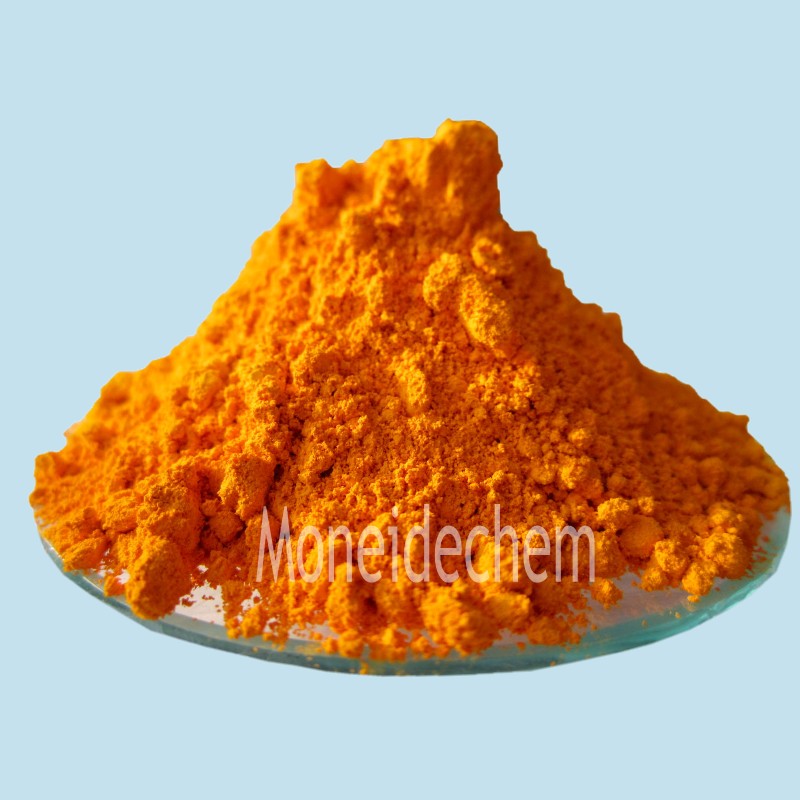Moneide Chemicals
Tel: 86-315-8309571
WhatsApp/WeChat/Mobile: 0086-15633399667
Skype: janet-honest
Mail: sales@moneidechem.com
Adresse: 2-7-523 Jidong Baumaterialien Tangshan, Hebei 064000 China
|
Chemischer Name |
Alizarin red S |
|
CAS-Nr. |
130-22-3 |
|
Summenformel |
C14H7NaSO7·H2O |
|
EINECS-Nr. |
204-981-8 |
|
Molekulargewicht |
360.27 |
|
Molekulare Struktur |
|
|
Details |
Appearance: Yellow brown or orange yellow crystalline powder. Sensitivity as reagent for Aluminum: Passes test Solubility in water: Passes test Sensitivity as reagent for acid and alkali: Passes test PH change range : 4.0(yellow)~6.0(red dish orange) Solubility: solve in hot water, water solution is fawn ,solve in ammonia, purple liquor, solve in alcohol, insolve in benzene and gasoline etc organic liquor. Packing: 25kg/ fibre drum |
|
Hauptanwendung |
Indicator |
What is alizarin red S used for?
Alizarin red S is primarily employed as a histological stain for detecting calcium deposits in biological tissues, particularly in bone and cartilage studies. This anthraquinone derivative forms a characteristic red complex with calcium ions, making it invaluable in osteogenesis research and skeletal development studies. Beyond histology, it serves as a metallochromic indicator in analytical chemistry for calcium and aluminum determination. The textile industry utilizes its dyeing properties for creating vibrant red shades on wool and silk when combined with metal mordants. In materials science, it's used to assess mineralization processes and study bone-implant interfaces. Its selective binding to calcium also makes it useful for identifying calcification in pathological conditions and evaluating bone nodule formation in cell cultures.
What is the function of Alizarin red stain?
Alizarin red S functions as a selective calcium-binding dye that produces a distinctive red-orange coloration when complexed with calcium ions. In biological staining, it specifically highlights mineralized tissue components, enabling researchers to visualize bone matrix deposition and calcium distribution patterns. The stain's mechanism relies on chelation chemistry, where its sulfonated anthraquinone structure forms stable complexes with Ca²⁺ ions. This property allows quantitative assessment of calcium deposition through spectrophotometric analysis of extracted stain. The dye also serves as a pH indicator, transitioning from yellow to red between pH 3.7-5.2. Its dual functionality as both a metal indicator and biological stain makes it uniquely valuable for studying biomineralization processes in developmental biology and tissue engineering applications.
Is Alizarin red a dye?
Yes, alizarin red S is a synthetic dye derived from the natural pigment alizarin originally extracted from madder root. As an anthraquinone dye, it belongs to an important class of colorants known for their lightfastness and vibrant hues. The "S" designation indicates the sulfonated form which enhances water solubility compared to the parent alizarin compound. While its dye properties were historically exploited for textile coloring, modern applications primarily utilize its selective staining capabilities in biological and analytical contexts. The molecule's conjugated double-bond system and electron-rich functional groups give it both colorant properties and metal-binding capacity. This dual nature as both a dye and chelating agent explains its continued importance across scientific disciplines despite being one of the earliest synthetic organic dyes developed.






























